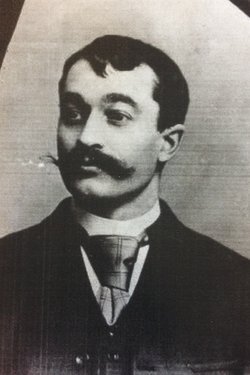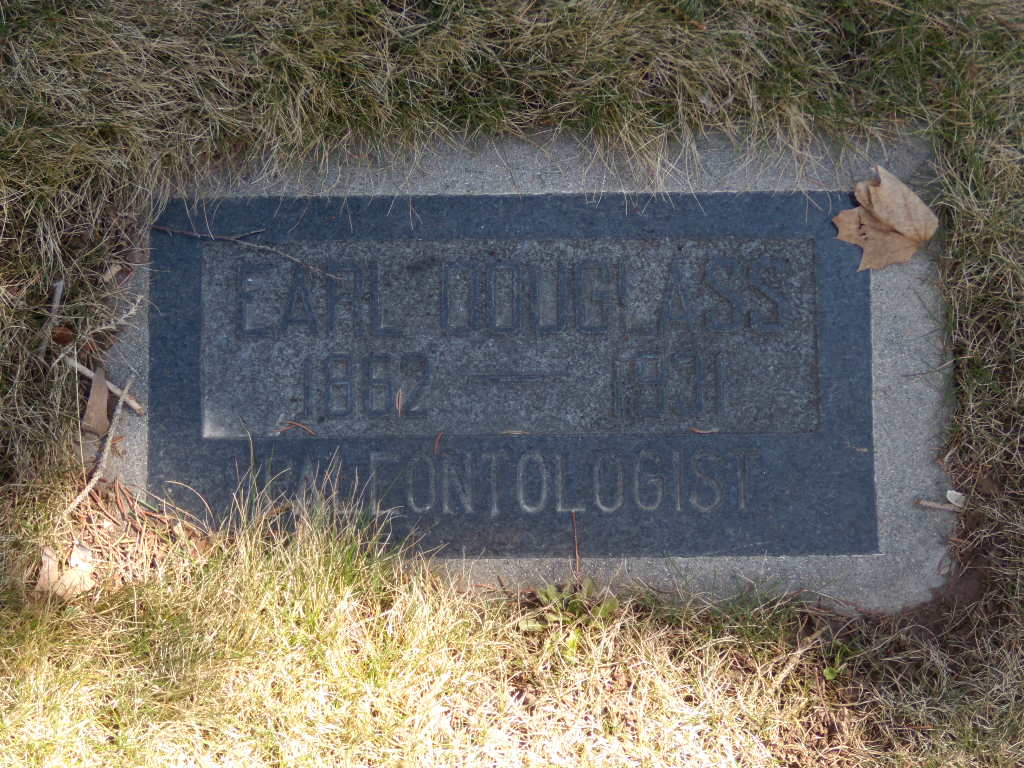Born into a farming family located at Medford, Minnesota, Earl became interested in the sciences and especially geology at an early age. As a young man he taught in schools located in Minnesota, South Dakota, and Montana. Between 1893 and 1902 he earned a bachelor's and also a master's degree and also began work for a PhD. In 1901 he joined a Princeton University Scientific Expedition to the Crazy Mountains north of Big Timber, Montana and helped excavate a land dinosaur known as the Duckbill Dinosaur from ancient sea deposits. In 1902 Douglass joined the paleontology department at the Carnegie Museum in Pittsburgh, Pennsylvania. Douglass went out on various fossil hunting expeditions across the west, including Montana and parts of Utah. In 1908 he found a promising bone, the femur of a Diplodocus, in an area east of Vernal, Utah. The bone was too large to move, but it proved that theoretically this area might prove fertile in finding more dinosaur bones in the future. By 1909, Andrew Carnegie was interested in finding the bones of a large dinosaur for his natural history museum in Pittsburgh. In July of that year, W.J. Holland, director of the museum wrote to Douglass and instructed him to "dig up dinosaur bones near Vernal." [quoted in "Speak to the Earth and It Will Teach You", a compilation of the diaries of Earl Douglass, by G.E. Douglass]. After looking hard for several days in August, Douglass was about to give up his search when he moved to an area that was thick with sandstone beds. There, on August 17th he found what he was looking for: eight tailbones of what turned out to be a large apatasaurus "in exact position". Douglass began to excavate the bones and in doing so, he also found bones from other dinosaur species mixed in with the original find. The discovery was huge and was the beginning of the Carnegie Quarry where Douglass would relocate and work with a small crew full time until 1924. By that time, over 700,000 tons of material had been removed and shipped back to Pittsburgh, but the quarry was far from exhausted. Douglass was amazing in his ability to label and categorize the bones for later constructing at the museum. His discovery turned out to be one of the most important fossil finds in North America. Douglass resigned from the Carnegie Museum in 1923 and was hired by the University of Utah to continue his work, which he did near Vernal for another year. He eventually moved to Salt Lake City with his wife, Pearl and son Gawin, where he died in 1931.
Born into a farming family located at Medford, Minnesota, Earl became interested in the sciences and especially geology at an early age. As a young man he taught in schools located in Minnesota, South Dakota, and Montana. Between 1893 and 1902 he earned a bachelor's and also a master's degree and also began work for a PhD. In 1901 he joined a Princeton University Scientific Expedition to the Crazy Mountains north of Big Timber, Montana and helped excavate a land dinosaur known as the Duckbill Dinosaur from ancient sea deposits. In 1902 Douglass joined the paleontology department at the Carnegie Museum in Pittsburgh, Pennsylvania. Douglass went out on various fossil hunting expeditions across the west, including Montana and parts of Utah. In 1908 he found a promising bone, the femur of a Diplodocus, in an area east of Vernal, Utah. The bone was too large to move, but it proved that theoretically this area might prove fertile in finding more dinosaur bones in the future. By 1909, Andrew Carnegie was interested in finding the bones of a large dinosaur for his natural history museum in Pittsburgh. In July of that year, W.J. Holland, director of the museum wrote to Douglass and instructed him to "dig up dinosaur bones near Vernal." [quoted in "Speak to the Earth and It Will Teach You", a compilation of the diaries of Earl Douglass, by G.E. Douglass]. After looking hard for several days in August, Douglass was about to give up his search when he moved to an area that was thick with sandstone beds. There, on August 17th he found what he was looking for: eight tailbones of what turned out to be a large apatasaurus "in exact position". Douglass began to excavate the bones and in doing so, he also found bones from other dinosaur species mixed in with the original find. The discovery was huge and was the beginning of the Carnegie Quarry where Douglass would relocate and work with a small crew full time until 1924. By that time, over 700,000 tons of material had been removed and shipped back to Pittsburgh, but the quarry was far from exhausted. Douglass was amazing in his ability to label and categorize the bones for later constructing at the museum. His discovery turned out to be one of the most important fossil finds in North America. Douglass resigned from the Carnegie Museum in 1923 and was hired by the University of Utah to continue his work, which he did near Vernal for another year. He eventually moved to Salt Lake City with his wife, Pearl and son Gawin, where he died in 1931.
Family Members
Sponsored by Ancestry
Advertisement
Advertisement









